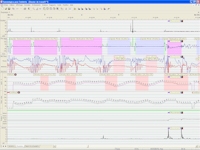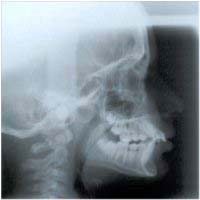The only examination that can be considered in the assessment of snoring and sleep apnea is nocturnal sleep recording, either polygraphic or polysomnographic.
Nocturnal polygraph examinations are performed on an outpatient basis, i.e. overnight at home. The advantage of the recording is that it is close to normal sleep conditions. This examination is more than sufficient to search for, diagnose and analyze obstructive sleep disorders. However, it cannot be used to make a precise diagnosis of a more complex sleep disorder, notably a non-obstructive one. It can be performed in children.
Polygraphs require the use of a fingertip forceps, abdominal and thoracic straps, and nasal goggles, in addition to the box.
Some polygraphs also include a microphone and mouth thermistor.
Polygraphy remains the most widely used screening test, providing a rate of abnormal respiratory events per hour of sleep, the rate of apnea and hypopnea per hour: AHI. Polygraphy analyzes arterial oxygen saturation, i.e. the level of oxygen in the blood and its variations.
Polygraphy can also be used to analyze respiratory events (snoring, apnea, hypopnea, desaturation) as a function of sleep position.
The results of the polygraph can be used to classify patients:
- simple snorers: AHI less than 5
- early apneas : AHI between 5 and 15
- moderate sleep apnea syndrome: AHI between 15 and 30
- severe sleep apnea syndrome: AHI above 30
 |
 |
 |
| CID Polygraph | Embletta polygraph | Extract from a nocturnal polygraphic sleep analysis |
Polysomnography
Polysomnography requires hospitalization, so it's more cumbersome and makes you sleep in unusual conditions, but gives additional information on sleep stages as it collects electroencephalographic data.
Polysomnography is therefore a finer-grained sleep examination, and polygraphy is sufficient to rule out obstructive sleep disorders. Polysomnography looks for non-obstructive sleep abnormalities, i.e. restless legs syndrome, depressive-type disorders or, for example, specific catalepsy-type illnesses.
Polysomnography can be preceded by various tests, including wakefulness tests, to assess sleepiness.
Other examinations : CT scan, teleradiography, MRI
Other examinations may be proposed but are not systematic in the assessment of snoring. These are essentially morphological radiological examinations:
- a CT scan of the nasal cavities and sinuses as part of an assessment of nasal obstruction
.JPG)
.JPG)
.JPG)
- a profile teleradiography examination to study the maxillo-mandibular bony bases


- On a much more exceptional basis, an MRI scan to assess the volume of the base of the tongue.


